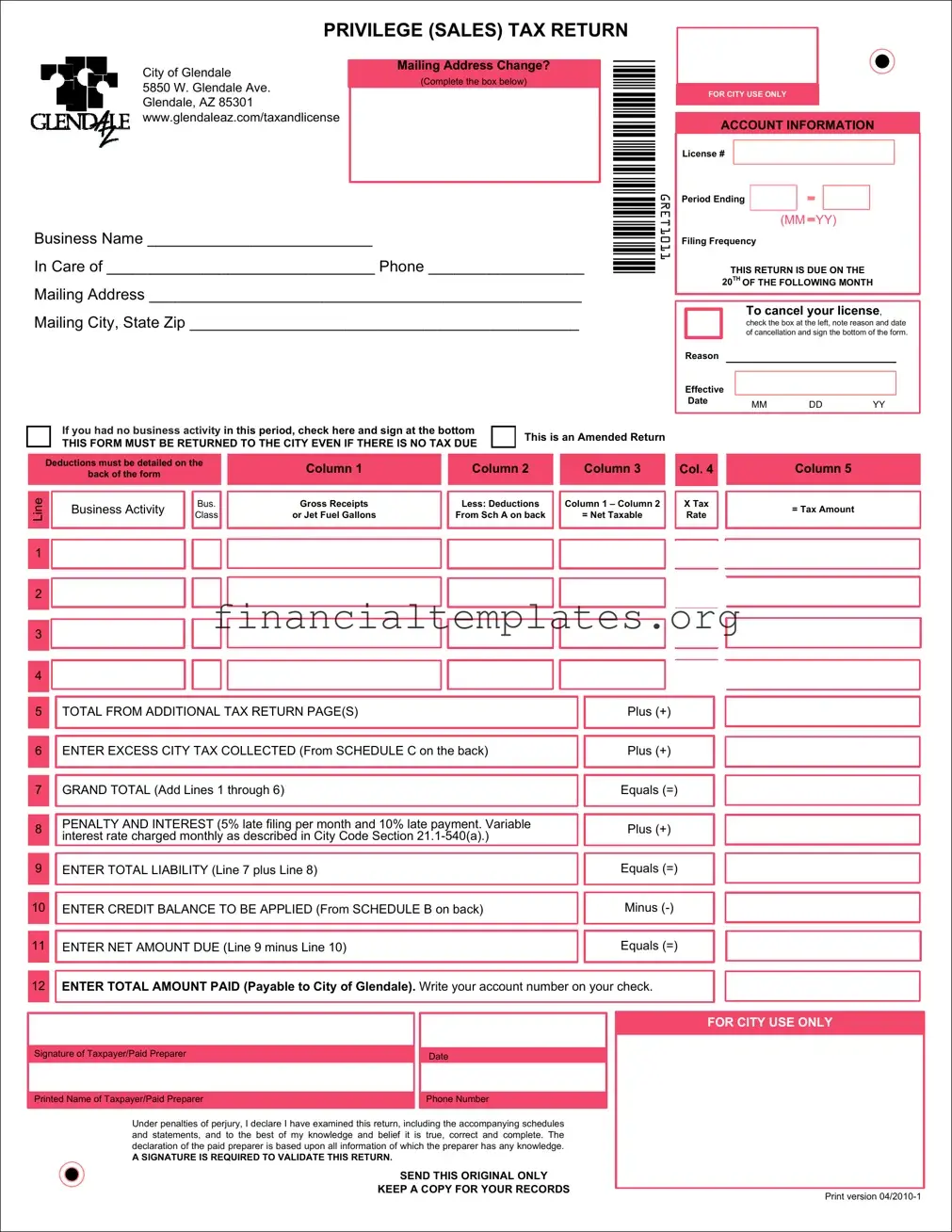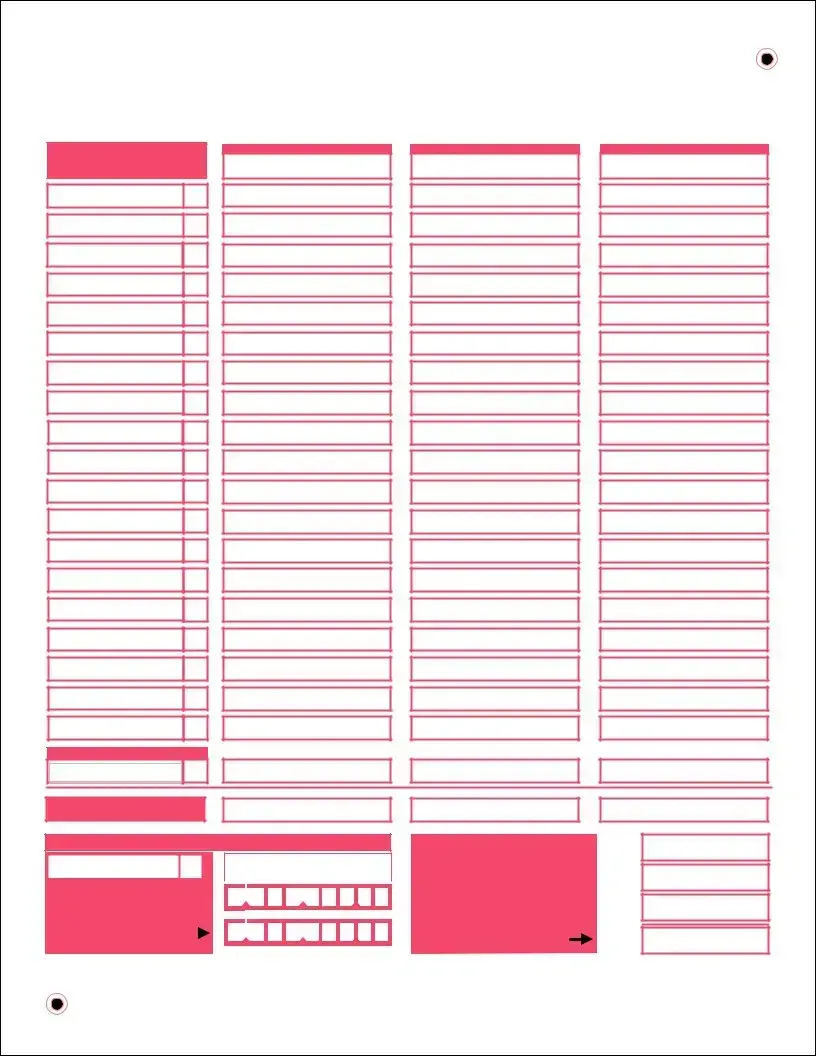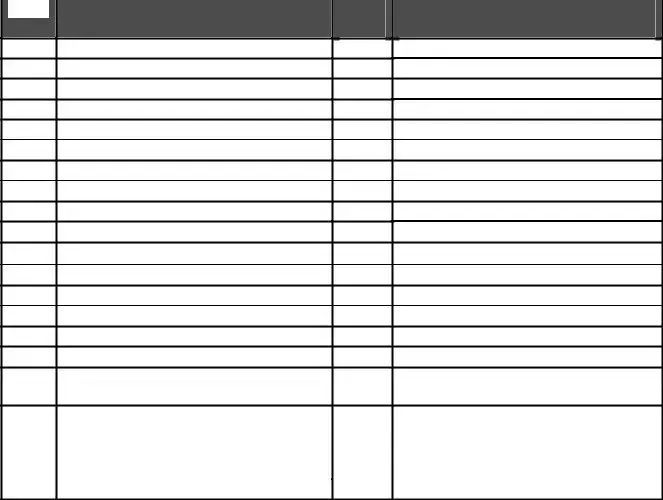The Employer's Quarterly Federal Tax Return, often referred to as Form 941, shares similarities with the Privilege Sales Tax Return form. Both documents are vital for reporting tax liabilities, although they focus on different taxes. The Form 941 reports on federal income tax withheld from employees, social security, and Medicare taxes, while the Privilege Sales Tax Return is concerned with the tax collected from sales activities. Each serves to ensure businesses comply with tax reporting and payment obligations at different government levels.
The State Unemployment Tax Act (SUTA) filing is another document resembling the Privilege Sales Tax Return in its purpose of calculating and reporting taxes due. While SUTA deals with unemployment insurance taxes at the state level to provide benefits to unemployed workers, the Privilege Sales Tax Return addresses the collection of taxes on sales and services. Both documents are essential for business compliance with tax regulations, supporting societal and economic structures within their respective scopes.
Form W-2, Wage and Tax Statement, also parallels the Privilege Sales Tax Return. It summarizes an employee's annual wages and the amount of taxes withheld from their paycheck. In contrast, the Privilege Sales Tax Return tallies the tax collected on sales. Though one focuses on income and the other on sales, both forms are crucial for accurately reporting tax information to the government and ensuring transparency and fairness in tax collection processes.
The Business License Renewal forms that many local governments require can be likened to the Privilege Sales Tax Return form. These forms are necessary for the ongoing authorization to operate within a specific jurisdiction. Similarly, the Privilege Sales Tax Return ensures that businesses comply with local sales tax laws, contributing to their legitimacy and operation within a community.
The Corporate Income Tax Return is another document with functions similar to the Privilege Sales Tax Return, albeit focusing on different types of tax. This form calculates the income tax liability based on a corporation's earnings, whereas the Privilege Sales Tax Return calculates tax based on sales. Both are critical for determining a business's tax obligations to the government.
Form 1099, used for reporting various types of income other than wages, salaries, and tips, shares a common goal with the Privilege Sales Tax Return: ensuring appropriate tax collection and compliance. The Privilege Sales Tax Return specifically targets sales tax collection, while Form 1099 encompasses a broader range of income sources, from independent contractor earnings to dividend income.
The Value Added Tax (VAT) Return, applicable in many countries outside the United States, is akin to the Privilege Sales Tax Return in its function and importance. Both forms are concerned with the tax on goods and services, though VAT is a multi-stage tax on value addition, and sales tax is typically a single-stage tax at the point of sale. Their accurate completion ensures businesses contribute fairly to the tax revenues of their respective governments.
The Excise Tax Return is another document similar to the Privilege Sales Tax Return, focusing on specific goods, services, and activities. While the excise tax is levied on particular items like gasoline, alcohol, and tobacco, the sales tax applies more broadly to sales transactions. Both forms play a role in the taxation system, ensuring businesses pay the correct taxes for their operations and sales.
Lastly, the Property Tax Declaration form, which reports the value of a business's property to calculate property tax, has its similarities with the Privilege Sales Tax Return. While focusing on different types of assets (property vs. sales), each form allows for the appropriate assessment and collection of taxes, supporting public services and infrastructure within their communities.



